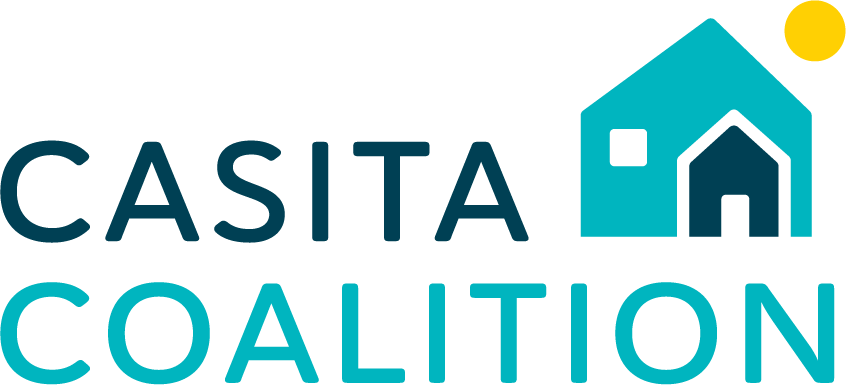ADU Bills Signed by Governor
On September 28th, California Governor Gavin Newsom signed a large slate of housing bills, including several bills focused on ADUs and small housing. Since California passed its by-right ADU legislation in 2017, eliminating the biggest barrier to ADU adoption in the state, a series of “next gen” barriers have cropped up, each of which makes it more difficult to build ADUs in some jurisdictions. Each of the four ADU-related bills passed this session and signed by the governor make an effort to address some of these secondary barriers, and bring ADUs within reach for more Californians.
Here, we break down each bill - what it does, who it helps, and how it affects California’s blossoming ADU industry.
SB 897
What it does:
Among many important changes, SB 897 allows two-story ADUs in some places. It also prevents local governments from posting unnecessary notices and prevents a local government from changing the Group R occupancy status as that relates to building codes.
Provides for extra height (18 feet vs. state minimum of 16’) for detached ADUs on single or multi-family homes near transit (within one-half of one-mile walking distance of a major transit stop or a high-quality transit corridor) with allowance for extra height to match main residence roof pitch; 18’ also allowed on detached ADUs where the main residence or multifamily structure is more than one story in height
Attached ADUs may be 25’ in height (or the height limitation in the local zoning ordinance that applies to the primary dwelling, whichever is lower,) allowing ADUs above garages
Local agencies must return a full set of comments on denied ADU/JADU projects within a specified timeframe, with a list of items still needed and a description of how to remedy the application
Why it matters:
SB 897 eliminates some irksome barriers to ADU adoption, like having to post a notice for a garage conversion, or changing a property’s status from “residential” simply because an ADU has been added. By increasing height limits in specified cases, this bill provides for more housing in the places it is needed most, and prevents local jurisdictions from limiting homeowners’ ability to construct that housing.
AB 2221
What it does:
AB 2221 clarifies many of the rules around ADU construction, including preventing local government from imposing front setbacks, and establishing a 60-day timeline for complete review of ADUs that are denied.
Brings efficiencies to permit and construction process for new multifamily projects that include ADUs
Expands ‘permitting agencies’ definition to improve streamlining
Confirms objective standards only may be used for review
Why it matters:
Loopholes in State law make it easier for some local jurisdictions to impose restrictions on ADUs, even if they are reasonably permissible, and this bill makes it more difficult for these jurisdictions to misuse loopholes (for example, technical requirements like front setbacks are not necessary for ADUs). It also imposes a timeline on jurisdictions so ADU permits don’t get delayed, preventing homeowners from completing their projects in a timely (and therefore more affordable) manner.
AB 916
What it does:
AB 916 requires that local governments approve changes in bedroom count for interior conversions of existing space with a ministerial process.
Why it matters:
By prohibiting local governments from creating ordinances that require a public hearing for any reconfiguring of existing space that might result in a change in bedroom count within an existing dwelling unit, AB 916 eliminates a piece of red tape that prevents additional bedrooms from being built. This bill originally had an increase in height for ADUs, but that was folded into SB 897.
AB 157
What it does:
A late addition to budget trailer bills, AB 157 requires CalHFA to convene a working group of experts to recommend next phase updates to CalHFA’s ADU grant program so that more homeowners can benefit.
Why it matters:
CalHFA’s ADU grant program has been moderately successful but requires homeowners to have ready access to money to complete their ADU build. In order to expand ADU adoption among low- and middle-income homeowners, more homeowners need access to loans to build their ADUs that can be issued based on the future income of the new unit.
Other ADU wins
The Budget Act appropriates an additional $50 million in new money this budget year bringing total program resources to over $100 million for CalHFA's ADU grant program that provides up to $40,000 for low- and moderate-income homeowners to cover pre-development costs. Finance remains one of the biggest barriers to ADU adoption, which is why Casita Coalition has been pressing for more State finance help.
Questions about this session’s ADU legislation? Feel free to reach out to Louis Mirante (Casita Coalition board member and housing policy lobbyist with Bay Area Council) at lmirante@bayareacouncil.org or Jared Basler (Casita Coalition Director of Strategic Initiatives) at jared@casitacoalition.org.
